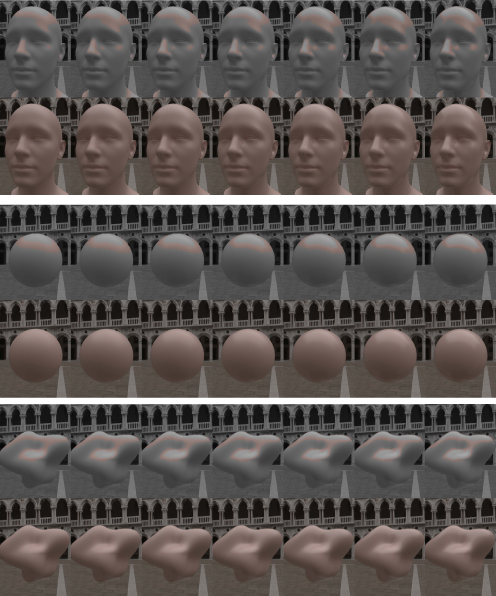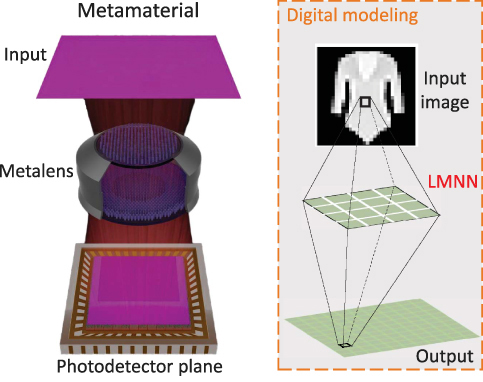
Human faces are considered an important type of stimuli integral to social interaction. Faces occupy a substantial share of digital content, and their appearance can meaningfully impact how they are perceived and evaluated. In particular, past work has shown that facial color appearance can directly influence such perceptions. However, little is known regarding the perception of facial gloss and its influence on facial skin color appearance. The current work investigates how skin roughness influences perceived facial gloss and how these in turn affect facial color appearance for 3D rendered faces. Here, “roughness” refers to a parameter of the microfacet function modeling the microscopic surface. Two psychophysical experiments were conducted to model the interaction among skin roughness, perceived facial gloss, and perceived facial color appearance using varied facial skin tones. The results indicated an exponential relationship between skin roughness and perceived facial gloss, which was consistent across different skin tones. Additionally, gloss appearance influenced the perceived lightness of faces, a pattern not observed to the same extent among non-face objects included in the experiment. We expect that these results might partially be explained by discounting specular components for surface color perception to infer color attributes and by simultaneous contrast induced by a concentrated specular highlight. The current findings provide guidance for predicting visual appearance of face and non-face objects and will be useful for gloss and color reproduction of rendered digital faces.

With recent advancements in display technology, the perception of objects based on their images has become a crucial aspect of the human visual experience. “Shitsukan” refers to a comprehensive perception of an object’s appearance, encompassing various attributes such as roughness, glossiness, and transparency. The accurate reproduction of these characteristics is increasingly necessary in various applications. However, the impact of pixel structures in different displays on shitsukan perception remains unclear. To achieve consistent reproduction and effective shitsukan management across displays, it is essential to clarify the impact of pixel structure on shitsukan perception. This study aimed to investigate the effect of display pixel arrangements on roughness perception. In an evaluation experiment, the effects of three sub-pixel arrays (red, green and blue [RGB], red, green, blue, and white [RGBW], and PenTile) on roughness perception using natural images were analyzed. The experimental results showed that variations in sub-pixel arrays significantly influence roughness perception under the given conditions. The average responses of all observers indicated that the PenTile array exhibited the highest perceived roughness, followed by the RGB and RGBW arrays. These findings suggest that variations in sub-pixel arrays can influence roughness perception. Moreover, a comprehensive analysis of observer responses via cluster analysis indicated that the relative influence of sub-pixel arrays on roughness perception varied among observers. It was also confirmed that differences in perceived roughness arise from image content and texture complexity. Specifically, the effect of sub-pixel arrays was more pronounced for images with complex textures and high-frequency components, while differences between arrays were less noticeable in images with simpler textures.

Vision is a component of a perceptual system whose function is to support purposeful behavior. In this project we studied the perceptual system that supports the visual perception of surface properties through manipulation. Observers were tasked with finding dents in simulated flat glossy surfaces. The surfaces were presented on a tangible display system implemented on an Apple iPad, that rendered the surfaces in real time and allowed observers to directly interact with them by tilting and rotating the device. On each trial we recorded the angular deviations indicated by the device's accelerometer and the images seen by the observer. The data reveal purposeful patterns of manipulation that serve the task by producing images that highlight the dent features. These investigations suggest the presence of an active visuo-motor perceptual system involved in the perception of surface properties, and provide a novel method for its study using tangible display systems

Perlin noise, a type of procedural noise, was used for the design of elevation files for 2.5D printing. This printing method uses elevation data from a height map to create physical relief by superimposing layers of ink. In this experiment, the grayscale values of noise functions were used as elevation values to build different surface structures in UV curable ink by 2.5D printing. Printed samples with varying levels of Perlin noise were created and their reflectance properties were studied by measuring the values of specular gloss. The roughness and specular gloss of the printed surfaces were effectively influenced when varying the persistence and octaves of the noise functions. The aim of implementing the procedural approach to a high-resolution printing method has been to explore the reflectance properties of custom noise functions when transferred to the physical realm. This might contribute to better understand the effect of surface structure on the appearance of materials. Potentially, this approach will enable the use of relief printing to produce structures with a more natural appearance and a desired gloss value by using a low-cost computing process.